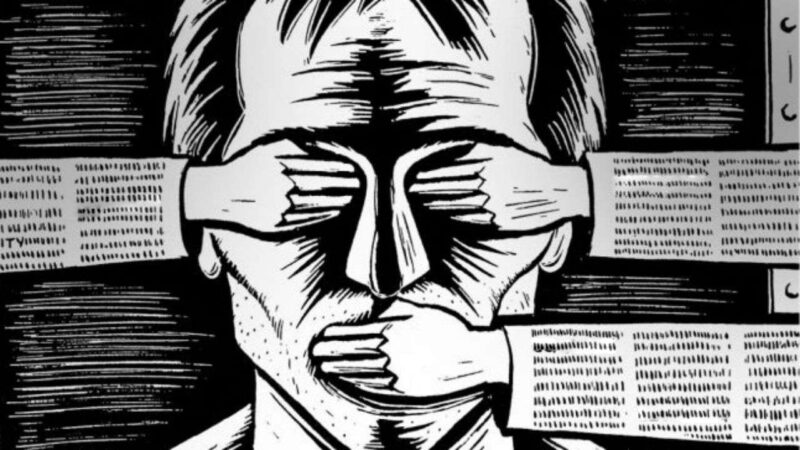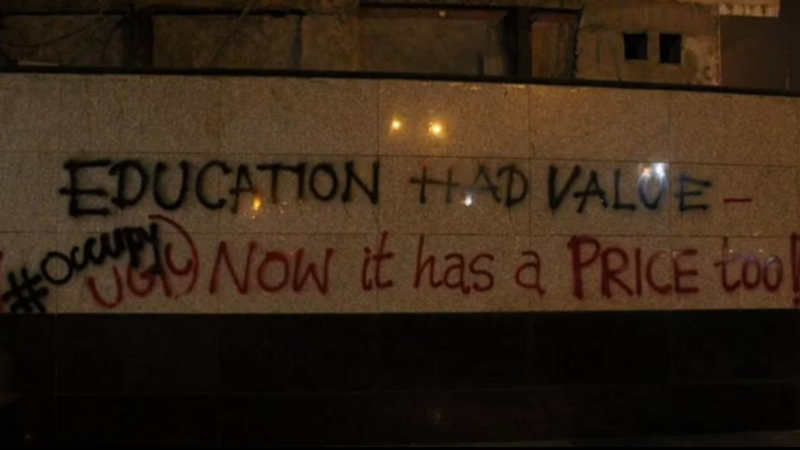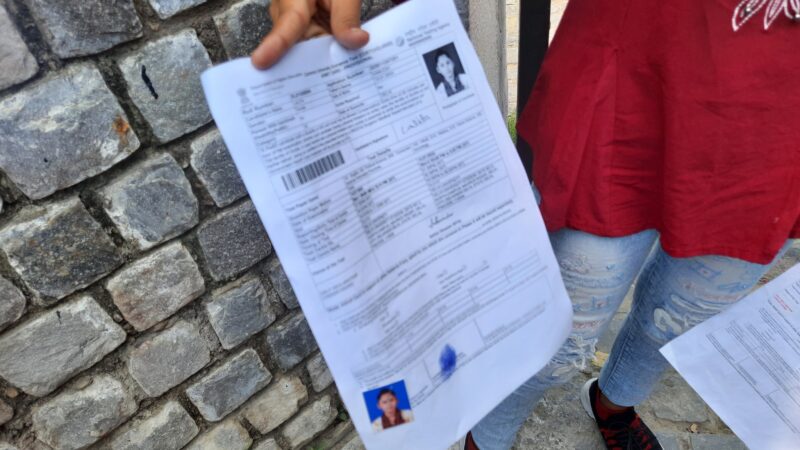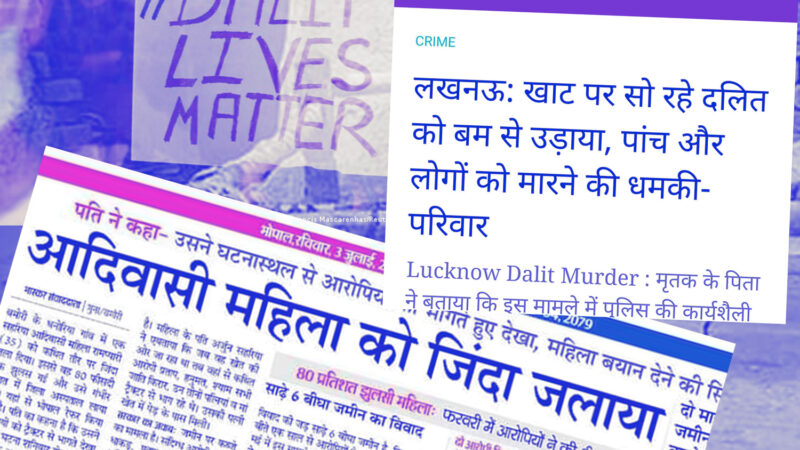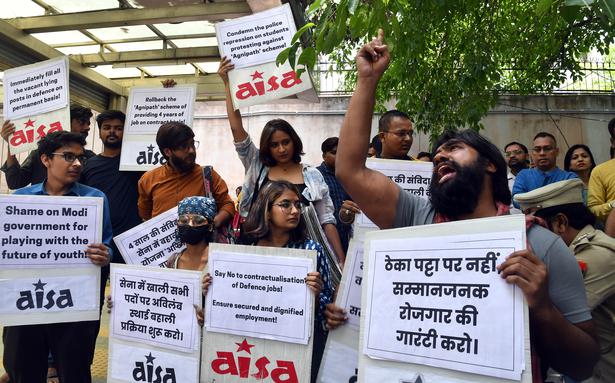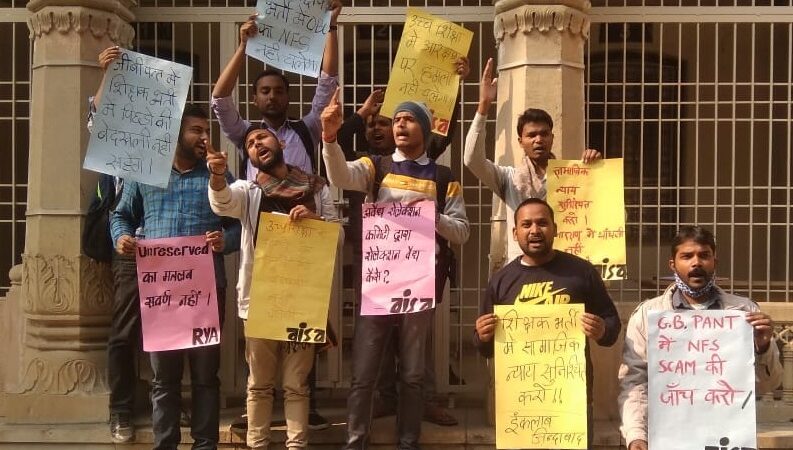Parliament Attack Case and Execution of Afzal Guru: The Many Questions That Remain
A week back, Afzal Guru was hanged in Tihar jail, in complete secrecy, without even informing his family and close relatives. Saffron brigade distributed sweets, and danced on the streets. We are now being told that finally the ‘national conscience’ has been ‘assuaged’ by this execution. We are being told by several voices – ranging from the Sangh Brigade and the Congress to Sitaram Yechury – that the “law has finally taken its course”, justice has been delivered, and the case should now be buried. Entire Kashmir has been shut down, virtually everyone in Kashmir is under surveillance, and several young people have been killed in police firing. Right in the centre of Delhi, activists of the Sangh brigade attack peaceful protestors, while the Delhi Police watches on in silent support. For the Sangh brigade, this moment of Afzal’s execution is one more occasion to manufacture a jingoist frenzy across the country. Anyone who continues to ask uncomfortable questions on the Afzal Guru trial and on the death penalty is immediately dubbed as an ‘anti-national’ and subjected to abuse, physical violence and hate speech.
Glaring Gaps
It is true that the attack on Parliament was most highly condemnable and an assault on the institution which is known as the highest seat of our democracy. Precisely because of this, it was imperative that the police and investigation agencies should have carried out an honest investigation to book the perpetrators. Instead, what did we get? We quote below from articles written by Praful Bidwai in 2006 which point out some of the glaring gaps in the prosecution’s case against Afzal:
“…Afzal was not the mastermind or chief conspirator in the Parliament attack. He didn’t personally commit murder or participate in the attack. Yet, he was sentenced to death for murder (Sec 302 of the Indian Penal Code), waging war against the state (Sec 121 and 121A), and criminal conspiracy (Sec 120A & B). The punishment is prima facie excessive and disproportionate.
Assistant Commissioner Rajbir Singh of the Delhi police’s anti-terrorism ‘Special Cell’ completed the investigation in just 17 days. An ‘encounter specialist’, Rajbir Singh stands disgraced for extortion and corruption.
..The biggest gaps pertain to the role of the Special Task Force of the J&K police, to whom Afzal, a former JKLF militant, surrendered. Afzal claims — without being contradicted — that he was introduced to Tariq Ahmad at an STF camp. Tariq took him to a police officer, Dravinder Singh, who introduced him to Mohammad alias Burger, named as the leader of the five attackers. Afzal admits that he brought Mohammad to Delhi and helped him buy the car used in the attack. But he says Dravinder Singh [of the STF] and Tariq ordered him to do so. Here, the investigation goes cold. There is no trace of Tariq or Dravinder… And it’s a mystery why the police knew nothing about the activities of a surrendered militant on whom they kept tabs.
Besides his own testimony, circumstantial evidence of Afzal’s involvement in conspiracy hinges on the recovery of explosives, and crucially, on records of cell phone calls to the five attackers. However, the explosives recovery record isn’t watertight. The police couldn’t explain why they broke into Afzal’s house during his absence — when the landlord had the key.
The cell phone record traced several calls from the five men to number 98114-89429, which allegedly belonged to an instrument seized from Afzal during his arrest. The instrument had no SIM card. The only identity mark was its IMEI number, unique to each instrument.
How did the police discover the IMEI number? There are only two ways: open the instrument, or dial a code and have the number displayed. But the officer who certified the recovery said on oath that he neither opened nor operated the instrument. Besides, the testimonies on the date of purchase of the phone with a new SIM card (December 4) and its first recorded operation (November 6) don’t match! This means that there’s a large grey area in the evidence.” Praful Bidwai, ‘Halting the descent into medieval barbarity’, The News International, 21 October 2006
Some of the unanswered questions:
• The judicial proceedings recorded two occasions on which Mohammad Afzal spoke before the law: his ‘confessional’ statement before the police and his statement under ‘Section 313 of the CrPC’. The Supreme court verdict itself admits Afzal’s much publicized ‘confession’ which was extracted in police custody was ‘UNRELIABLE’. But after the Supreme Court rejected the prosecution’s theory based on Afzal’s ‘confession’, the latter’s CrPC 313 statement was the only basis left on which his role in events that led to the attack could be probed. The Court has found his only role in it was to help a man suspected to be involved in the Parliament attack, to find a house in Delhi and to buy a car. Afzal never denied or falsified this role, rather admitted it. In his statement he, in fact, named an STF officer Davinder Singh who ordered him to perform those acts. Yet, Davinder Singh was mentioned neither in the FIR nor chargesheet, nor was he made a witness in the case. He did not figure anywhere in the trials, despite the presence of his phone numbers in Afzal’s phone records. How come the Supreme Court chose to believe one part of Afzal’s statement under Section 313, while conveniently ignored the rest? Why wasn’t the link with the STF probed?
• After the Parliament attack, a former Police Commissioner of Thane S.M. Shangari, claimed in a press conference that one of the killed terrorist (Abu Hamza) had been arrested in Maharashtra in December 2000 along with three others (one year before the Parliament house attack) and had subsequently been handed over to the J&K Police. Therefore at the time of the Parliament house attack. Abu Hamza was supposedly in the custody of the J&K police. However, K Rajendra, then inspector general of the J&K Police, dismissed Shangari’s enquiries calling it a case of mistaken identity and arguing that Hamza is a common Muslim name. Perhaps so. But then what happened to those four militants including Abu Hamza in J&K STF custody? The Thane court issued repeated summons to the J&K Police to produce them in Thane. They were never sent nor any explanation provided! WHY? (See Mihir Srivastava,The Question of Reasonable Doubt,The Open Magazine 14/2/13)
• The so-called ‘masterminds’ behind the attack (Masood Azhar, Ghazi Baba and Tariq Ahmad) were never arrested and produced in any court, to verify the prosecution’s story. Of these, Ghazi Baba was claimed to be shot dead by security forces in 2004. Then, where is Tariq? Why can’t the STF produce him? After Kasab’s arrest, we saw a flurry of diplomatic exchange, with India providing proof of Pakistan’s involvement, demanding extraditions and so on. WHY didn’t we see a similar diplomatic exchange demanding that these three be produced in Indian courts?
• And finally, the big question that the Indian State must answer: Afzal being a surrendered militant was under constant State surveillance. Could a man constantly watched by our security forces, and who, even according to the Court, did not belong to any terrorist organisation at the time of Parliament attack, manage to execute a terrorist attack of such magnitude? If a person under the watchful eye of the STF could be part of a conspiracy to wage war against the state, how can anything less than a public inquiry do? For this is not about the guilt or innocence of one man, but about how a system works and what it means, to democracy, sovereignty and the security of the state. Whose pawn was he really?
Some of the best legal minds in the country have ripped apart the story being told to us; they have raised several crucial questions on the ‘evidence’ provided by the prosecution, based on which DU professor SAR Geelani was released, and Shaukat Guru’s sentence was reduced. It seems no coincidence that Afzal, the only man sentenced to death, was the only accused who was not properly represented at the trial stage, he NEVER had a lawyer of his choice at the trial stage. The Supreme Court, while admitting that there is no direct evidence of Afzal’s guilt, has held that he must die to satisfy the ‘collective conscience’ of the Indian nation. “The incident, which resulted in heavy casualties, has shaken the entire nation and the collective conscience of the society will be satisfied if the capital punishment is awarded to the offender,” the judgment said. It was almost as if there was a need to at least ensure one death sentence so that the faith of the public in the efficacy of the prosecution and the judiciary and the Legislature would not be shaken. A range of Indian citizens – teachers, writers, lawyers, Gandhian and Left activists, ordinary people – have raised their voice to declare that they are NOT part of this contrived ‘collective conscience’. Truly, the conscience of democratic and peace-loving citizens can be satisfied only if there is a guarantee that there is no witch-hunting or scape-goating, and those really guilty for terror and genocide are identified and punished.
Manufacturing and Manipulating a Communal Commonsense
Let us remember that in this country where a communal common sense is continuously manufactured, it is chillingly easy for the state machinery to convince people that ‘every terrorist is likely to be a Muslim’. It is precisely this communal common sense that the saffron fascists and the Sangh brigade depend on and seek to exploit: remember how Bajrang Dal activists were caught making bombs in Nanded before the Malegaon blasts, remember how fake beards and Muslim clothes and caps were found with these activists! Also remember how the Malegaon police in 2006 claimed that the use of RDX proves ‘Islamic’ involvement- which subsequently proved to be the handiworks of elements linked to the Sanghi outfits, thanks to the daring investigations by Hemant Karkare and his team. It is only of late that the entire saffron terror network – responsible for the Mecca Masjid blasts, the Malegaon blasts and the Samjhauta express blasts – is being gradually unraveled.
Double Standards Abound
We must remind ourselves that no one, including BJP, who is their alliance partner in the Punjab government, calls Akali Dal ‘anti-national’ when the Khalistani separatist Balwant Singh Rajoana, convicted in the killing of a former Punjab Chief Minister, is termed a ‘living martyr’. The people demanding revocation of his death sentence are NOT subjected to hate speech, curfews, and violence, unlike Kashmiris who mourn the death of Afzal. We must keep reminding ourselves that in this country, death penalty has not been awarded to the perpetrators of the 1984 Sikh riots, to the murderers and rapists of the 2002 Gujarat genocide, to the accused in the Bathani Tola massacre, to the killers in Khairlanji or to the killers of Graham Staines. In fact, the Supreme court said that the Orissa HC was justified in awarding life term and not death sentence to Dara Singh and Hembran as the crime was committed in the passion to teach Staines a lesson for his alleged attempts to convert tribals. (“Though Graham Staines and his two minor sons were burnt to death while they were sleeping inside a station wagon at Manoharpur, the intention was to teach a lesson to Staines about his religious activities, namely, converting poor tribals to Christianity”, said the judgement- TOI, 21/1/11). Contrast this with “satisfying collective conscience” criterion of the very same Supreme Court! Such visible double standards abound. Is it not urgent that our societal discourse and justice system acknowledge consistent yardsticks in dealing with acts of terrorism, caste and communal massacres, human rights violations – without pitting them against each other, without calling one category of heinous crime to be the excuse for the other? Why are certain categories of heinous crime treated with lesser seriousness and often offered immunity?
Therefore it is important to frame this very important debate – which has far-reaching repercussions for democracy in this country – beyond the frenzy of capital punishment and the politics of ‘vengeance’. On the crucial question of Parliament attack and Afzal Guru’s hanging, all those who care for democracy will have to raise their voices on the manner in which his trial took place, the manner in which ‘collective conscience’ was invoked as a rationale for death sentence instead of legally admissible evidence and for unearthing of the entire trail of unexplored, ignored facts to reach the bottom of the truth.
16.2.13

